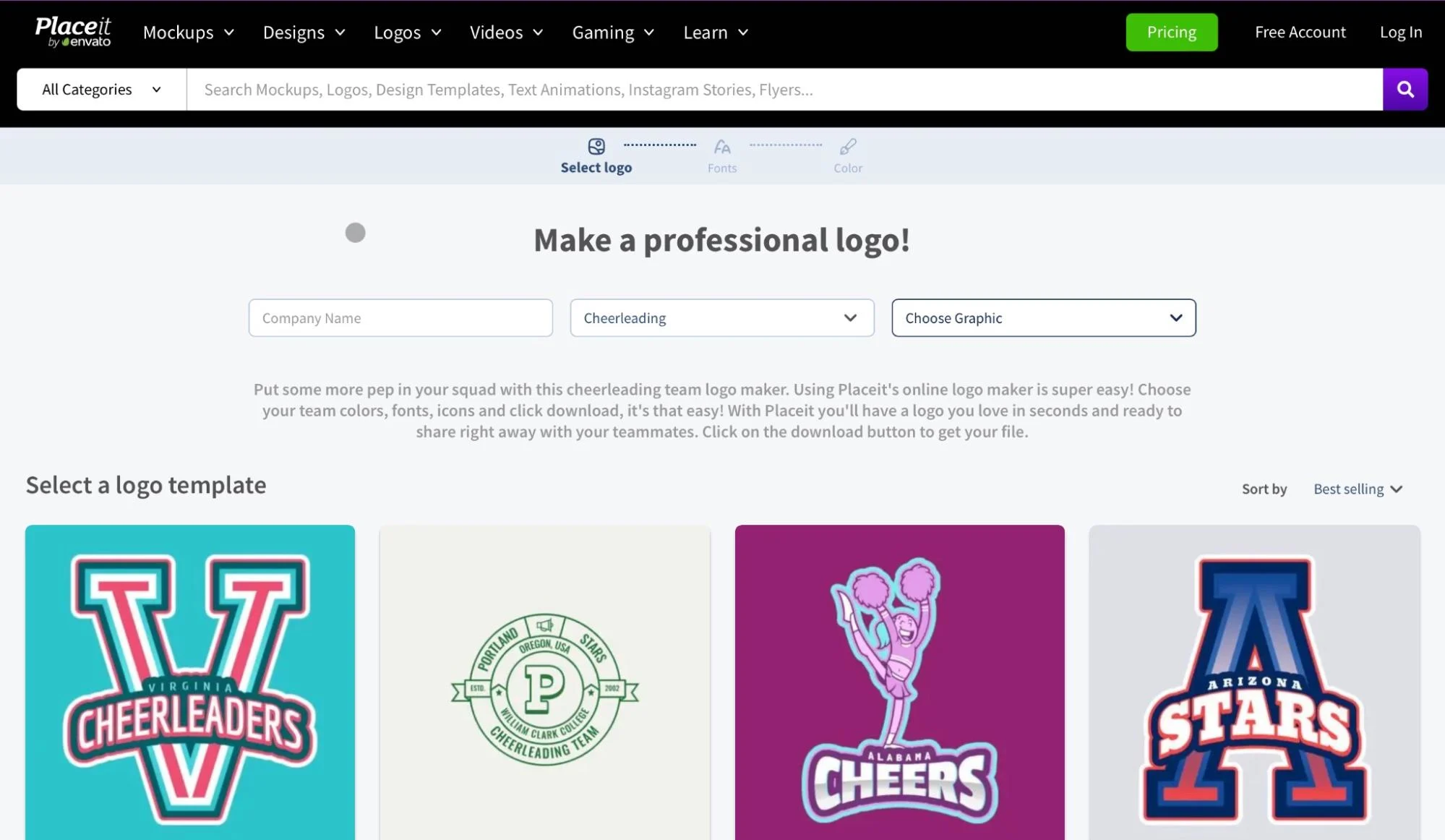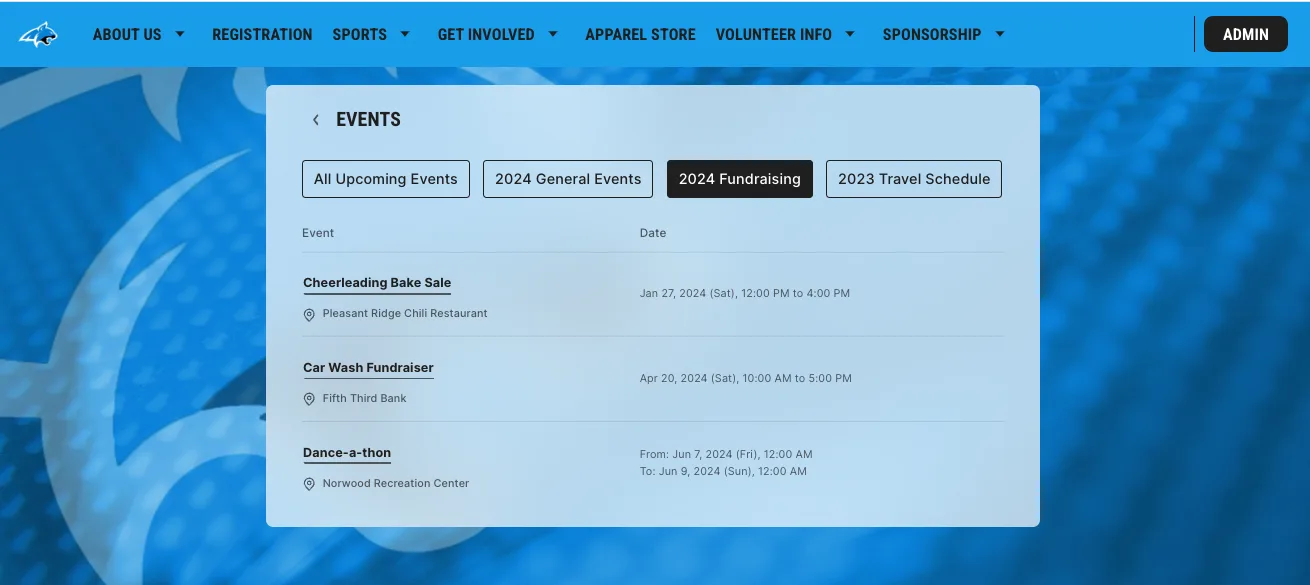
With the number of cheerleading participants in the USA exceeding 3 million each year, the sport’s popularity will continue to rise. This increase in participation levels creates a need in communities for additional programming.
Creating a cheerleading team can provide opportunities for youth athletes to learn new skills, build self-confidence, and develop meaningful relationships.
Whether you're a school administrator looking to start a cheerleading program for your sports teams or a parent interested in forming a recreational cheerleading squad, starting a team can be both exciting and challenging.
In this post, we will provide step-by-step instructions on how to create your own co-ed or all-girl cheerleading team that inspires and empowers young athletes.
How to start a cheerleading team, step by step
1. Determine the type of squad you’ll be
When you think of a cheerleading team, your mind probably goes to sideline cheerleading at football games or basketball games. Although this is a popular option, it’s not the only type of cheerleading that exists.
Choosing your squad type is the initial step to creating your team, as each type has its own style, level of athleticism, and focus.

- Recreational cheerleading is a non-competitive sport that focuses on learning basic skills and having fun. Cheerleaders perform at community or sporting events, and everyone is able to participate since no certain skill level is required.
- All-star cheerleading is focused more on stunts, tumbling, and choreographed routines. These squads have tryouts and compete on a local, regional, national, world championships level. Practices are used to prepare for competitions, and participation can be costly. Athletes with a background in gymnastics are more likely to participate in an all-star cheer program since it’s at a higher skill level.
- School cheerleading is for athletes within a certain school district and is available for middle and high schoolers. High school has a Junior Varsity (JV) and a Varsity team where athletes must participate in tryouts. They cheer for their school teams during the year and have few competitions. The focus is on learning cheers, chants, and basic stunts for sideline cheering and half-time shows.
2. Decide on a name, logo, and colors
Now that you’ve chosen the type of cheerleading squad you’ll have, it’s time to create your team’s brand. Your brand will consist of your team’s name, logo and colors.

Photo by Ashley Williams for Pexels
Deciding on a name can be fun and exciting, but it’s important to choose a name that reflects your team’s mission statement and values.
Let’s look at two examples:
- If you're starting a team for your local middle school, you may want to name the squad “Mini {Insert Mascot’s Name}” so that it aligns with existing branding.
- If you’re a new all-star team, your name might include descriptive words such as “Xtreme,” “Pros,” or “Legacy.”
When choosing a name, consider its uniqueness. Since you’ll have your own website, you’ll want it to appear first in search engine results. If your team’s name is commonly used, then you might have trouble with prospects finding your website.
Your next step is to determine your colors and design a logo. When choosing your colors, consider how easy it will be to source uniforms and equipment. For example, if your main color is a specific shade of blue, there might not be many options, so we’d recommend sticking to a primary color for this first choice!
Creating a sports logo is a great way to build credibility for a new team and you can use it on your uniforms, additional apparel, signage, and social media. Not a graphic designer? Not a problem - you can always use a logo generator like PlaceIt to get started!

3. Create a bank account for your team’s funds
The cost to participate in your cheerleading squad will vary depending on what type of team you’ve formed. Regardless of the cost to participate, create a bank account specifically for the team's funds.
Once you’ve chosen a bank, gather the necessary documentation. Most branches will require your team’s tax identification number (TIN) or Employer Identification Number (EIN). You can get your assigned number by registering as a business with the IRS.
After you get a bank account, determine who can have access. Authorized users could include your:
- Treasurer
- Head coach
- Fundraising chair.
Keeping your account secure will be important as people change positions.
4. Find a facility to practice in
Having a designated area for practices will help build credibility with parents, keep athletes focused, and minimize confusion. Since you’re just getting started, you might not have an area on hand.
The quickest way to source a facility is to ask local cheerleading programs. Once the proper documentation has been submitted, there might be a designated spot open to all programs.

Photo by cottonbro studio for Pexels
If you’re a new team in the area, contact local recreational facilities to inquire about their rental prices. Consider their hours of access, rental costs and what’s included in the fee (ie., tumbling mats).
Once you have found a few potential facilities, be sure to visit them in person to ensure that they meet your team's needs in terms of space, safety, and equipment.
5. Host tryouts
Even if your squad is open to everyone, still consider hosting tryouts. They encourage friendly competition, allow cheerleading coaches to understand everyone’s skill level and help sort squad members into teams.
To host tryouts, you’ll first need to provide every athlete with a routine. Most tryout routines will include a chant, cheer and dance choreography. Depending on your age level and squad you might include stunts, jumps and tumbling. Each judge should have a score sheet so that you can evaluate each cheerleader on the same scale.
The chant and cheer can be performed individually or as a small group and will help gauge their voice projection, sharpness of moves, enthusiasm and rhythm.
Common tryouts will include an individual chant and small group cheer to facilitate coaches' grading of teamwork. The dance will include jumps, such as toe touches, and allow coaches to evaluate rhythm, coordination, and flexibility further.
6. Get uniforms and equipment
Now that you’ve established your brand and chosen your team members, you’ll need to order uniforms and equipment. Matching uniforms is important to show team unity, provide credibility, and give each athlete a sense of belonging.
The cheerleading uniform style can vary based on age and squad type, but there are components that every uniform should have. Yours will need to include a skirt, briefs and a top. The top may have two separate pieces, which would include a sleeveless shell and a liner. Other items to consider are matching pom-poms, socks, tennis shoes and bows.
You can easily order uniforms on Cheerleading.com.

Before you place your order, make sure measurements have been taken to ensure the proper fit. Most retailers will provide you with a measuring chart since certain brands can run bigger or smaller.
7. Get a sports management software
Communicating with parents, posting practice schedules and registering cheerleaders can be hard work, so it’s important to have one place where you can manage all of these moving parts. Having dedicated sports management software is a great way to start because it will be tailored to your needs.
Jersey Watch is an all-in-one sports management tool built for youth and community sports organizations. You can build a website for your cheerleading team, register participants, manage payments, communicate with parents, and run background checks on coaches. All of these features are easily accessible on a fast and user-friendly platform.

8. Find competitions to join
One way to motivate your squad is to join local cheerleading competitions. Participating will build confidence in your cheerleaders, introduce them to local teams, and allow your team to showcase their hard work. Since your team is new, it will also increase your brand awareness with other coaches, judges, and prospective team members.
Typical cheerleading competitions consist of a two-and-a-half-minute routine that includes a chant, cheer, and dance. Your team is assigned to a division and will be judged based on technique, difficulty, creativity, and showmanship. The team with the highest score will win and be awarded with a trophy, medal, or ribbon.
💡PRO TIP: Add competitions to your team calendar online. That way, parents and supporters can stay updated on future competitions and events.

9. Start fundraising
Keeping costs low is an important way to maximize the number of cheerleaders who can participate. Fundraising provides an opportunity for your team to attend more competitions, buy new uniforms, or decrease individual registration fees.
There are an unlimited number of fundraising ideas for your team to choose from. You could opt for a tried-and-true fundraiser such as a car wash or you could try an online fundraiser where you only need wifi and a computer to get started. Regardless of your youth sports fundraiser choice, you’ll want to spread the word within your community to increase the likelihood of making money.
10. Seek local sponsors
Sponsorships are different from fundraisers in that they’re mutually beneficial to both your team and the person or business sponsoring you. They also require more time and effort because you have to build relationships within your community.
To get started, create a list of potential sponsors in your area and then develop a sponsorship proposal. Within your proposal, have a package of dedicated tiers that clearly outline the varying levels of investment.
You’ll then want to reach out to your potential sponsors and set up a meeting to discuss the opportunity. Depending on the sponsor, you may need to first craft a compelling email with basic information about your team and the benefits of becoming a sponsor.
Remember to be patient and persistent in your outreach, and always be professional and courteous in your communications.
Tips for starting a cheer squad
Once you’ve established an established cheerleading team, you’ll want to have continuing improvement plans. We have a few tips that you should follow to see long-term success with your program.
Get the proper qualifications
Having the proper qualifications can save you from issues down the road. Here are a few types of qualifications that all cheerlead programs should have:
- Background checks: Every adult coming in contact with your cheerleaders should have a completed criminal background check. This will ensure that you’re keeping your athletes' safety top of your mind
- Participation Waivers: Each athlete should have signed sports waiver forms on file for each season. These waivers could include injury liability, medical authorization, and photo and video release
- Safety Training: Proper safety training, such as a CPR certification, is important for all cheer coaches and volunteers. At a minimum, everyone should be certified in first-aid treatment
- Certifications and Permits: Depending on the facility you’re training in, you may be required to have your own insurance or additional permits. Make sure you’re up to date on your local laws
Make a cheerleading business plan
Your business plan is a document that outlines your organization’s goals and plans for the future. Its components can include a mission statement, services offered, financial projections, and future growth plans.
During this time, you’ll also want to create your team’s budget since you’ll be evaluating the health of your finances and making future projections. You can use our sports budget template to get started!
Your business plan should be updated regularly to reflect changes in the market, industry, or operations. A well-written business plan can help you secure funding, attract new cheerleaders, and guide your business decisions.
Plan a cheerleading camp
Creating a local cheerleading camp is a great way to establish trust, increase revenue, and build brand momentum. Many programs put on a one- to two-day clinic where cheerleaders learn new moves, participate in team-building exercises, and practice for their final performance.
It’s also a great opportunity for more advanced team members to work on their leadership skills by mentoring younger cheerleaders. You can collect registration fees from each participant to purchase t-shirts, lunch, and prizes.
Stay organized
Staying organized is critical to your team’s success. Being organized as a cheer team consists of consistent communication with parents, posting easily accessible information to your website, and having timely registration windows.
Software like Jersey Watch provides you with the tools to succeed as a youth sports program. Our platform allows you to manage your team’s website, registration, and communication all from one area.
Create your competitive cheer squad today
Starting a cheerleading team can be a great experience for all involved. By following the steps outlined in this guide, you can create a safe and supportive environment for cheerleaders to learn new skills, build confidence, and develop lifelong friendships. Our team at Jersey Watch can provide you with the tools to get started today!
Cheerleading team FAQ
What is a cheerleading team?
A cheerleading team is a group of athletes who perform routines combining dance, gymnastics, and stunts to support sports teams and participate in competitions. They work together to boost team spirit, entertain audiences, and showcase their athletic abilities.
Cheer teams can vary in size, with NCAA teams typically comprising 1-3 members per stunt group and recreational teams ranging from 8-22 members. Although often associated with women's sports, cheerleading is a co-ed activity that welcomes both male and female athletes.
How many people are usually on a cheer team?
Cheer teams can have anywhere from 12 to 36 people, depending on the level of competition and the team's requirements. Bigger teams are often seen in high schools and colleges.
What is the #1 cheer team in America?
In the American cheer scene, the Navarro College Cheer Team from Corsicana, Texas, is often regarded as the best. It has numerous national cheerleading championships and international recognition, particularly highlighted in the Netflix series, "Cheer."
Do you have to pay to be on a cheer team?
A cheer team can cost anywhere from $500 to $3,000 per year for recreational and school teams, to $5,000 to $10,000 per year for all-star competitive cheerleading teams. You'll have to pay for uniforms, competition fees, travel, training, and gear.